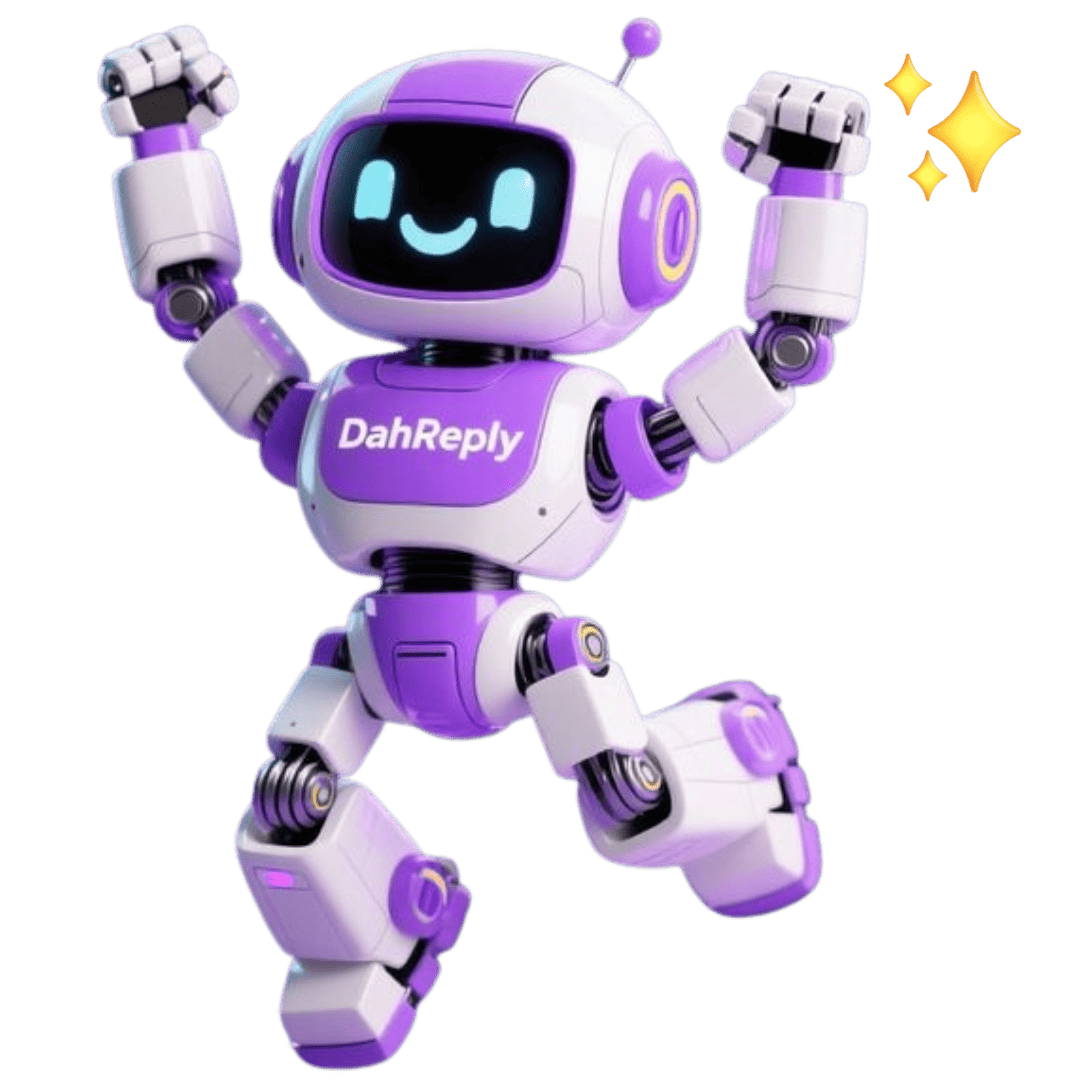TABLE OF CONTENTS
26 February 2025
The McDonald's Customer Service AI Chatbot Failure
In June 2024, McDonald's made headlines for all the wrong reasons. After three years of working with IBM to automate drive-thru ordering with AI, the fast-food giant pulled the plug on the project. Why? A wave of viral social media posts exposing the chatbot's failures.
One particularly infamous TikTok showed two customers repeatedly begging the AI to stop adding Chicken McNuggets to their order yet they ended with 260 McNuggets.
The public failure underscored a critical lesson: AI chatbots can make or break customer experiences. The problem wasn’t AI itself—it was how the AI was trained (or rather, how it wasn’t).
Unfortunately, this isn't just a cautionary tale – it's still happening right now, across thousands of businesses.
But here's the good news: learning how to train chatbot effectively can prevent such disasters and transform your chatbot from a potential liability into your strongest asset.
Why Do Some Chatbots Feel Human While Others Don’t
What is a Large Language Model (LLM)?
Most AI chatbots today rely on LLMs to generate responses.
An LLM (Large Language Model) is a type of artificial intelligence that understands and generates human-like text. It learns from a huge amount of data—things such as books, articles, and online conversations—to recognise patterns in language.
Think of an LLM as a digital brain that has read through billions of conversations, articles, and documents. It’s like a student who has memorised every book in the library. Over time, they start recognising how words and sentences are structured, how different topics connect, and how to answer questions based on what they've learned.
But here’s the problem:
Out-of-the-box, this advanced machine learning model has one major flaw: they don’t know your business, your customers, or your brand voice. They give generic, one-size-fits-all responses that lack depth, relevance, and accuracy.
Memorising information doesn’t mean understanding it. Imagine teaching someone who's read every book about swimming but has never been in a pool. That's what a base LLM is like—full of theoretical knowledge but lacking practical experience.
This is where fine-tuning comes in.
What is Fine Tuning?
Fine-tuning is a process that helps AI specialise in certain tasks by training it on specific data. Think of it as additional training after the AI has already learned general knowledge.
Fine-tuning is like giving them structured swimming lessons. It teaches AI how to apply its knowledge effectively, making it more engaging, accurate, and natural in conversations.
Think about how you'd explain your job to:
- A 5-year-old
- A friend
- Your industry's governing body
Notice how you naturally adjust your language, complexity, and tone for each audience? That's what we teach our AI through fine-tuning.
Why AI Fine Tune Matters in Chatbot Implementation Challenges
Many businesses struggle with chatbot challenges due to the lack of proper AI fine tune. A common misconception is that deploying an off-the-shelf chatbot will immediately solve customer service inefficiencies.
However, generic models lack:
Context and Knowledge
A generic chatbot only knows what’s in its training data. If it hasn’t been trained on your industry, product, or common customer queries, it won’t have the depth to provide meaningful answers. Instead, it gives vague, generic responses—or worse, makes things up. This is what we call “AI hallucinations” or “data hallucinations”
For instance, a fintech chatbot without industry-specific fine-tuning may struggle to explain investment strategies effectively, leading to frustrated users who may abandon the service altogether.
AI fine-tuning solves this problem by training the chatbot on specific, high-quality datasets relevant to a business’s industry, products, and customer queries.
Instead of relying solely on the vast but general knowledge in its base model, a fine-tuned chatbot learns:
- Industry-specific terminology
- Common customer scenarios
- Product information
- FAQ databases
- Previous successful customer interactions
This shift is crucial. A chatbot that provides accurate, industry-specific responses builds trust and credibility, keeping users engaged rather than frustrating them with shallow or misleading answers.
Brand Voice or Personality
One of the biggest chatbot challenges is maintaining consistency in tone and personality. A legal firm’s chatbot shouldn’t sound the same as a beauty brand’s, right? Yet, without fine-tuning, they do.
Imagine a luxury hotel chatbot that responds with blunt, transactional language like, "Room booked." That’s a missed opportunity. A fine-tuned chatbot would say, "Your ocean-view suite is confirmed! We can’t wait to welcome you. Let us know if you have any special requests."
Fine-tuning is what allows a chatbot to develop a consistent tone and personality that aligns with a brand’s identity.
Without it, chatbots rely on the generic style of their base model, which often results in stiff, impersonal, or inconsistent messaging.
Conversational Flow
A robotic chatbot doesn’t understand the natural flow of a conversation. It responds transactionally rather than engagingly, failing to keep users engaged.
For example, if a customer says, "I need help with my bill," a poorly trained chatbot might say, "Billing department hours: 9 AM - 6 PM." This can make interactions feel frustrating and impersonal, leading to disengagement.
Meanwhile, a fine-tuned chatbot might say, "I’d be happy to help. Are you looking for payment options, invoice details, or something else?"
By fine-tuning a chatbot on real customer interactions, company-specific support cases, and conversational best practices, it learns to recognise different context and intents behind a question.
Instead of simply providing transactional, robotic responses, it can guide the conversation and offer relevant assistance.
How does AI Fine Tune Works
Fine-tuning an AI chatbot is not a one-step process—it’s a structured, multi-phase approach that transforms a generic chatbot into a powerful, human-like conversational assistant.
At DahReply, we follow a rigorous process that ensures chatbots not only understand language but also apply it correctly within the right context, industry, and brand personality.
Foundation Training
Before fine-tuning begins, the AI must be trained on a general understanding of language, conversation structures, and basic customer interactions.
This stage is similar to how humans learn a language—first, we understand words and sentences, then we learn how to structure conversations meaningfully.
Key areas of foundation training include:
- Base knowledge acquisition: Exposing the AI to large-scale datasets that contain diverse linguistic patterns, sentence structures, and commonly used phrases.
- Understanding language patterns: Teaching the model to differentiate between formal and informal tones, detect sentiment, and respond appropriately.
- Learning basic conversation flow: Training the AI to manage back-and-forth interactions smoothly without breaking the conversational rhythm.
At this stage, the chatbot is like a well-read student who has memorised a dictionary but doesn’t yet understand how to hold a meaningful conversation.
This is why fine-tuning is essential—it personalises and refines this basic knowledge into real-world application.
Specialisation Phase
Once the chatbot has a strong foundation in language, it needs to be adapted to the specific business and industry it will operate in.
This is where the real transformation begins.
Imagine training a new employee. You wouldn’t just give them a company handbook and expect them to perform flawlessly. They need hands-on experience, industry knowledge, and practice dealing with real customer inquiries. AI is no different.
In this phase, we train the AI in:
- Industry-specific vocabulary: A financial services chatbot must understand terms like "APR," "investment portfolio," and "credit score," while a retail chatbot needs to know about "inventory tracking," "loyalty programs," and "order fulfilment." Without this knowledge, the AI risks providing generic, unhelpful responses.
- Common use cases: Every industry has specific interactions. A healthcare chatbot should be trained to guide patients through appointment scheduling, while an HR chatbot should handle employee leave requests and payroll inquiries.
- Cultural nuances: Language isn’t just about words—it’s about cultural understanding. For example, customer expectations in Malaysia might differ from those in the US. In some cultures, direct responses are appreciated; in others, a more formal or polite tone is expected. Training AI on these subtleties ensures it interacts appropriately with different audiences.
- Regional language variations: Even within the same language, there are variations in expressions and terminology. UK English uses “holiday” while US English uses “vacation.” A chatbot trained on local language preferences will create a more natural user experience.
At this stage, the chatbot starts to sound knowledgeable, like a well-trained employee who understands the industry. However, it still needs to refine its tone and personality to match the company’s brand identity.
Response Calibration
Now that the chatbot understands industry-specific language, it must be fine-tuned to engage with users in a way that feels natural, friendly, and aligned with the brand’s voice.
Think of this phase as "customer service training" for the chatbot. Just as a company wouldn’t want its customer support agents to sound robotic or generic, the AI must be trained to communicate effectively, maintaining context, consistency, and empathy.
Key elements of response calibration include:
- Tone adjustment: A chatbot for a luxury fashion brand should sound sophisticated and elegant, while a chatbot for a gaming company might adopt a fun, playful tone. Fine-tuning ensures the AI speaks in a way that aligns with the brand.
- Context maintenance: Customers don’t like repeating themselves. If a user asks, “What are your shipping options?” and follows up with, “How long does express shipping take?” the AI should remember that they are still discussing delivery. Fine-tuning helps the chatbot maintain continuity instead of treating each question as an isolated query.
- Personality alignment: Some brands want a chatbot that feels warm and conversational, while others prefer a highly professional, corporate assistant. We train AI to adopt a consistent personality that reflects the company’s values.
Example of Fine-Tuning
To illustrate the impact of fine-tuning, let’s look at how two versions of a chatbot might respond to the same customer query.
Scenario: A customer contacts an e-commerce chatbot about a delayed order.
Before fine-tuning (generic AI response):
"Here is our delivery policy: [link]. If your order has not arrived, please check tracking or contact support."
After fine-tuning (human-like AI response):
"I’m really sorry to hear about the delay! Let me check your order status for you right now. Could you provide your order number, or should I look it up using your email address?"
The second response is far more engaging, empathetic, and helpful. This is what separates a generic chatbot from one that truly enhances customer experience.
Making Your Chatbot More Human
Creating more human-like AI isn't about deception—it's about effectiveness. Through careful fine-tuning and continuous improvement, we can create AI assistants that are both capable and authentic.
Want to evaluate your current chatbot's effectiveness?
Consider these questions:
- Does it remember context from earlier in the conversation?
- Can it handle unexpected queries gracefully?
- Does it understand and acknowledge emotions?
- Can it admit its limitations?
- Does it maintain a consistent personality?
A chatbot that answers "yes" to all these questions is well on its way to delivering a seamless, human-like experience.
Ready to Optimise Your Chatbot?
A well-trained AI chatbot is a game-changer for businesses, but it doesn’t happen by accident.
Through structured fine-tuning—covering foundational training, industry specialisation, response calibration, and continuous learning—AI can become a highly effective and human-like assistant.
At DahReply, we specialise in creating AI chatbot solutions that go beyond basic automation.
With our expertise in custom chatbot development and AI finetuning, we ensure that your chatbot is fine-tuned for accuracy, personality, and brand alignment.
Are you ready to implement a chatbot that truly understands your customers? Let’s talk! Book a demo today and discover how AI fine tune can revolutionise your customer interactions.


